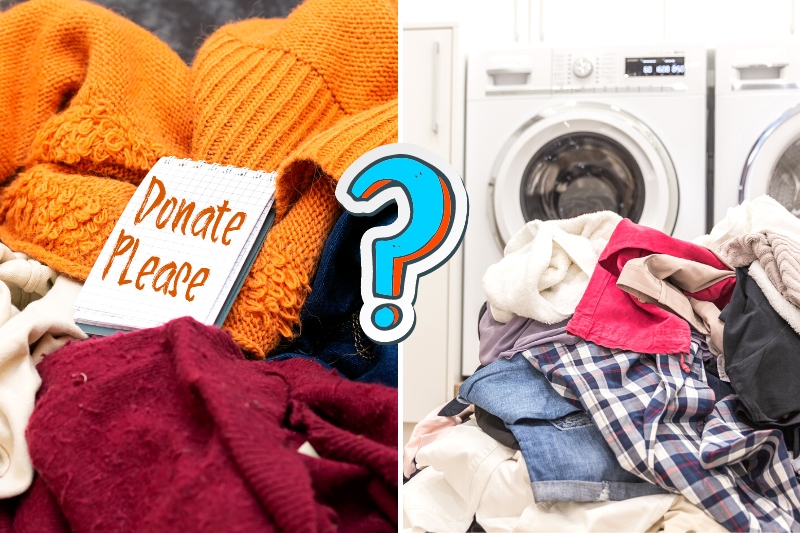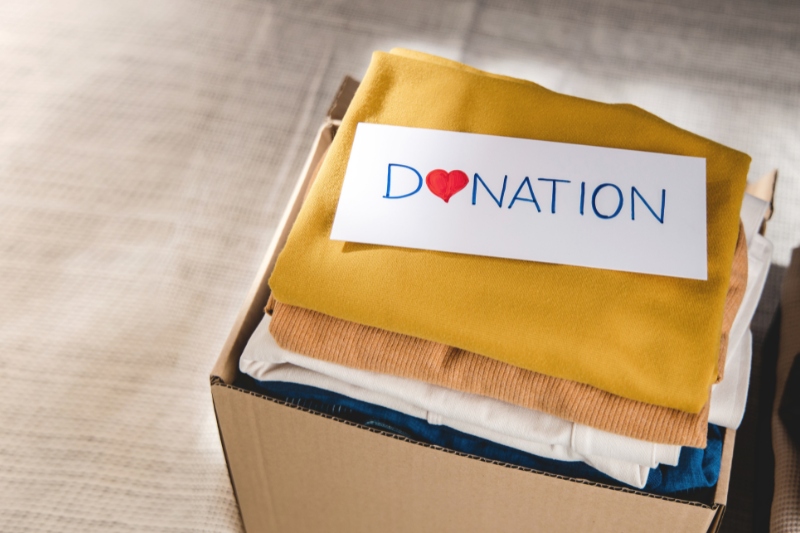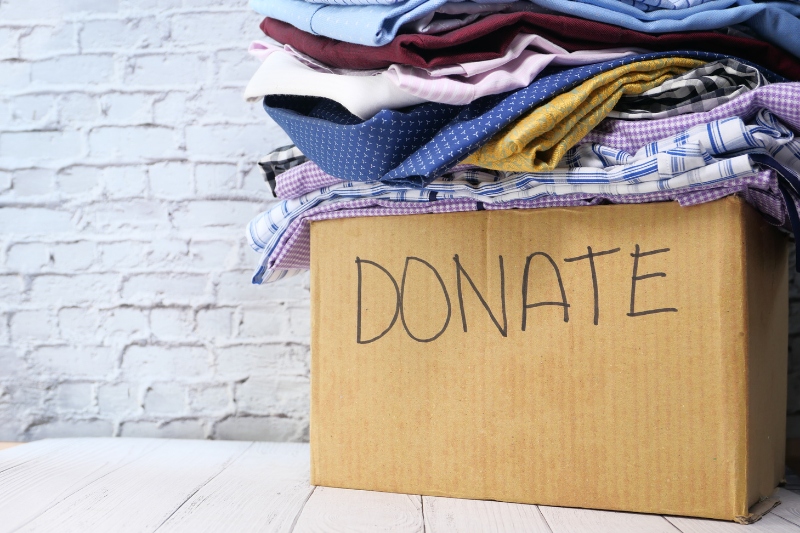When sorting through your wardrobe, one of the most sustainable ways to get rid of your unwanted clothes is to donate them to charity.
Thrifting has become increasingly popular in recent years, and charities greatly benefit from all the second-hand clothes they can sell in their stores.
Unfortunately, charity shops often receive items of clothing that are not good enough to be sold to a new owner.
There is also a stigma that clothes from charity shops are dirty and need to be thoroughly cleaned once you bring them home.
So what kind of clothing can be donated to charity? Should you wash clothes before donating them? And is there anything else you need to do before giving them away? Read on to find out!
Do You Have to Wash Clothes Before Giving Them to Charity?

You should always wash or dry clean your clothes before donating them to charity.
The same is true when donating other fabric items, such as towels or bedding.
It is always best to ensure the items you donate are of a quality that you would be happy to purchase.
Charity shops will inspect any clothing donations they receive and remove any noticeably damaged or dirty items.
However, many unwashed garments can still make it through this process and onto the shop floor.
They will not wash these donations themselves and ask anyone that gives clothing to ensure the items are clean and wearable before handing them over.
Unfortunately, many people still don’t abide by these rules. If you purchase an item of clothing from a charity shop yourself, we always recommend washing it, just in case.
Germs can survive on fabric for an extended period and can easily spread to yourself and your home.
How to Prepare Clothes for the Charity Shop

When donating clothes, charities prefer it if you check the items for any damage before handing them over. This saves them the time of sorting through your donation to look for any unsellable garments.
If you’re thinking of giving some clothes, we suggest going through the following steps:
- Sort through your clothes and decide which ones you want to donate. If this is too overwhelming, you can get help from friends, family, or a professional decluttering service.
- Check through the pockets of all the clothes and remove loose items.
- Throw out any garments with large holes in them. You can fix any damage if possible, but don’t donate the item if the patch job is clearly visible.
- Treat any stains on the fabric using a powerful stain remover, then throw the clothes in the wash. If any items do not come clean, they are best repurposed or thrown out.
- Ensure any removable parts of a garment are reattached, for example, a matching belt or the hood of a jacket.
- If possible, replace any missing buttons or broken zips. Once again, any items that cannot be returned to good condition should not be donated.
- Pack the clothing into a bag and take it to your chosen charity shop. Alternatively, you can arrange for some charities to collect your donation directly from your home.
When donating clothes to charity, it is a good idea to donate items at the time of year in which they’re likely to be sold and worn.
For example, heavy coats are best donated in winter, while dresses would be more popular in summer.
Most charities don’t have large storage areas to hold onto donated items for later on in the year, so this helps reduce the number of items that have to be thrown out.
What Clothing Items Should Not Be Donated?

Charity shops generally accept all kinds of clothing as donations.
Underwear and swimwear are the two exceptions to this rule. Although some charities will take bras and swimwear, it is always best to call and check before donating these items just to be sure.
If you are looking to donate some more special garments (e.g., prom dresses, wedding dresses, or large winter coats), it is also best to ask the charity if they are currently accepting such donations before handing them over.
These items can be hard to store if the charity already has a large inventory of second-hand clothes.
Other than that, any items of clothing that are in good condition can be donated.
Once again, avoid giving away clothes that are stained, holey, or otherwise damaged, as the charity cannot pass these on to a new owner.
Why It’s Good to Give Your Old Clothes to Charity

When you clear out your wardrobe, there are several options for getting rid of your unwanted clothes other than donating. These include selling your clothes or repurposing them into something new.
With so many options, it can be hard to decide which to choose.
Below is a list of reasons why you may want to donate to charity:
- It’s sustainable: According to WRAP, an estimated £140 million worth of clothes are sent to UK landfills every year. Donating your clothes instead of throwing them out helps to make the fashion industry more sustainable by giving clothes a new life, reducing the demand for new clothes, and limiting what ends up in a landfill.
- It supports great causes: The clothes you donate help charities raise funds for vital research and supplies for those in need. You can choose to donate to a charity that supports a cause you believe in (e.g., Cancer Research UK to help fight cancer), and it is a great way to support these organisations when you have no money to give yourself.
- It helps people: Charity donations not only help people through the work the charity does itself, but charity shops also help people in more direct ways. For example, charity shops allow people struggling with money to buy the clothes they need without turning to fast fashion retailers.

Hannah has a passion for cleaning. She worked her way around Australia by cleaning hostels in exchange for free accommodation and used her cleaning skills to bag a job as a chalet host for a luxury ski company in France.






